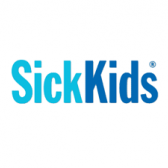A Quality Improvement Journey: Prevention of Pressure Injuries in a Pediatric Operating Room

Summary
In the Operating Room (OR), patients are placed in various positions to maximize access to the surgical site for extended periods of time. Furthermore, various medical devices are often used throughout surgery that pose an additional risk factor that could lead to skin breakdown. These factors, as well as other ones such as length of surgery, immobility and inability to perceive pain, can result in significant complications for the patients, such as Pressure Injuries (PI).
PIs are one of the Hospital Acquired Complication (HAC) indicators. Hence, the assessment, prevention, and management of PIs have been an ongoing priority in the last few years. SickKids has a robust policy and management plan for the identification and treatment of patients at risk of development of a PI, or with a pre-existing PI. However, the majority of the efforts are focused on inpatient units.
The overall focus of my fellowship was to develop my leadership skills, increase my knowledge in quality improvement (QI) processes and to lead a QI initiative in order to improve practice in the pediatric perioperative setting in relations to PI prevention.
My fellowship began by exploring the SickKids’ Quality Management webpage, which was rich in resources, frameworks and tools. With support and guidance from the QI specialist, I learned the key concepts of QI, which enabled me to outline the steps and define the goals of a QI process. I also demonstrated my understanding of the Plan-Do-Study-Act cycle (PDSA) to my mentorship team through a presentation of a detailed summary.
After reviewing the environmental scanning strategies, I completed Claims, Concerns and Issues and created a survey for the OR RNs for them to express what they consider as areas of improvement and strengths. I also, developed a benchmarking summary to compare PI prevention strategies in pediatric hospitals in the world.
The insight provided by the front-line nurses enabled me to formulate a Fishbone Diagram, highlighting the potential causes for PIs in the OR, and to complete a Gap Analysis describing the barriers and facilitators of a potential PI prevention plan.
Before drafting my PDSA, I conducted a comprehensive literature review, which highlighted the gap, and indicated the need for a PI prevention plan, specific to perioperative pediatric patients. With consultation from the lead surgeon for PI at Sick Kids, I modified an adult Risk assessment Tool (RAT) to incorporate pediatric specific considerations. I then used my newly acquired QI concepts to formulate my first Model for Improvement framework. The pilot trial was implemented in the General Surgery ORs. The RNs involved were provided with the education and tools, enabling them to use the modified RAT and assess patients preoperatively. Following the process outlined by the PDSA cycle, I analyzed the process and identified additional barriers that led to changes in the direction of my project.
The second PDSA cycle was implemented in the Urology ORs. The aim was to Pilot the “Pause, Check & Reposition” section of the intra-op Prevention Bundle. An additional education was provided to the participating RNs and surgeons. This second PDSA cycle was successfully implemented where the patients were assessed intra-operatively using a checklist without any surgical delays.
Integrating key stakeholders such as the anesthetists, nurses and surgeons, was key during the development of the Pressure & Positioning Injury Prevention bundle and the success of the pilot trial.
Outcomes
The aim of the first PDSA cycle was to assess patients in General Surgery using the newly modified Risk Assessment Tool. Very early into the pilot, many challenges were encountered. They were difficulties to obtain pertinent information, such as the Body Mass Index, due to inability to measure patients’ height related to physical and/or mental health conditions. They were limitations related to the electronic documentation system that made it difficult for OR Registered Nurses to access the Braden score documented by the pre-operative Registered Nurses.
The RNAO fellowship helped me learn how to overcome barriers using strategies such as brainstorming, meeting with stakeholders, and generating possible solutions. It also provided me the opportunity to gain knowledge and skills in designing, implementing and evaluating a QI initiative.
By conducting literature review, meeting with subject matter experts in PI prevention, and attending webinars organized by RNAO, my knowledge in PIs and prevention strategies have increased. I am now able to understand the needs of the patient population at Sick kids and incorporate the information into a QI project.
The pilot project, the survey, and the one-on-one discussions raised awareness among the RNs. They are more informed of PI prevention strategies and feel empowered with knowledge to advocate for the improvement of PI outcomes.
Overall experience
The RNAO fellowship has been an amazing learning experience for which I am very grateful. The support and guidance that I received from my mentors and the perioperative leadership team at Sick Kids were monumental. I was able to network with colleagues in Canada, the United States and Europe as well as within Sick Kids. More importantly, it equipped me with tools and strategies to lead a QI initiative and promote Best Practice. It also enhanced my confidence and helped me discover my leadership style. I would definitely recommend the RNAO Advanced Clinical Practice Fellowship to my nursing colleagues who are looking to develop their skills as leaders and clinicians. Lastly, I would like to thank RNAO for enabling and empowering RNs by providing endless opportunities.
Despite what I gained in knowledge and skills during this fellowship, I feel that my journey has just begun.
